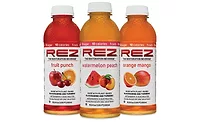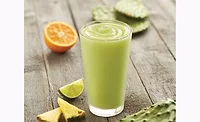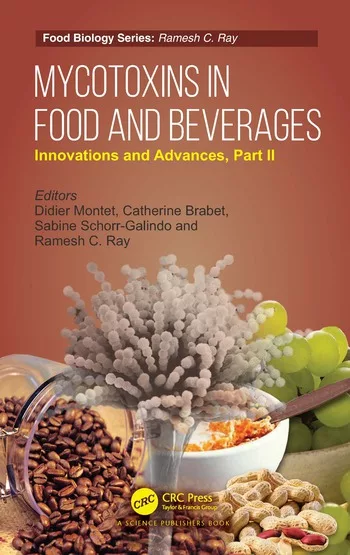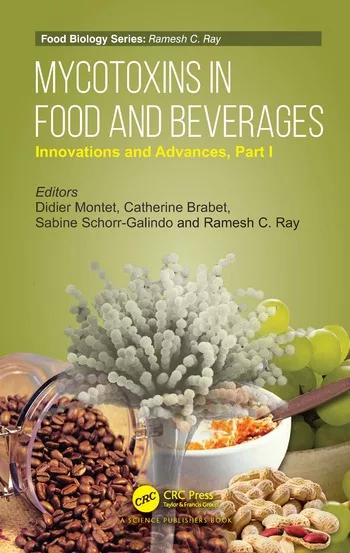Prevention influences use of antioxidants in beverages
Clean-label, natural trends contribute as well
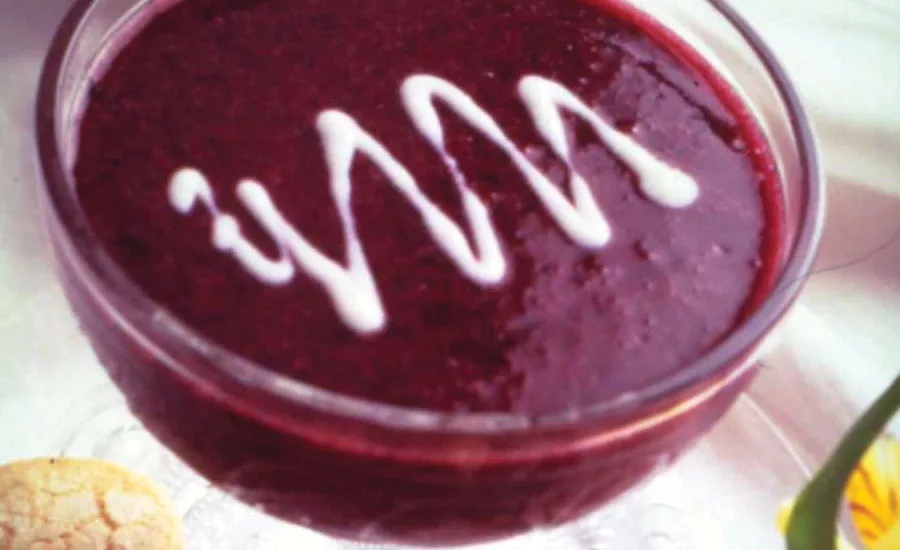
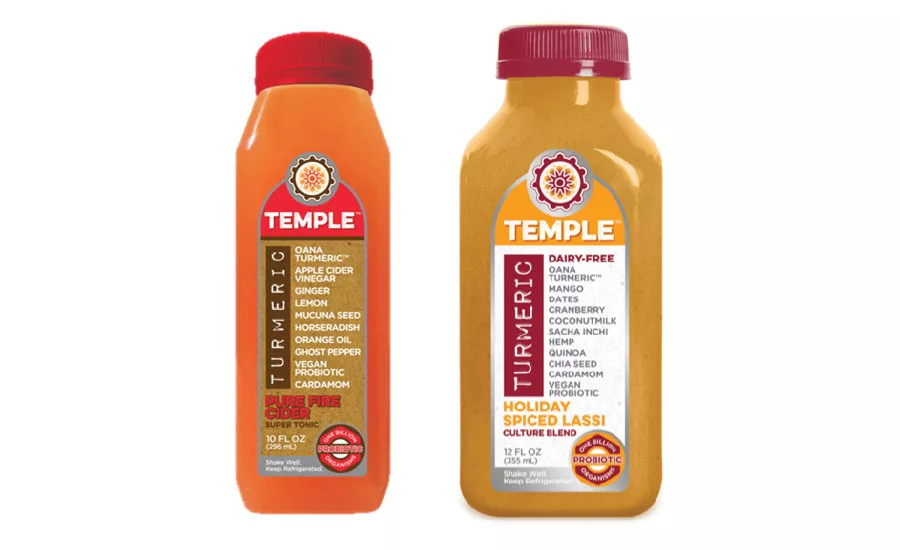
Turmeric is emerging as a go-to source for antioxidant properties, BI Nutraceuticals' Alison Raban notes. (Image courtesy of Temple Turmeric)
At an annual wellness appointment, most doctors will preach about living a healthy lifestyle to help prevent the development of illnesses. As more consumers embrace this proactive approach, beverage-makers are seeking ingredients that can support this health-and-wellness trend.
“As consumers shift from treatment to prevention when it comes to their health, the use of antioxidant ingredients within beverages [has] increased and will continue do so, especially with the aging of the baby boomers,” says Alison Raban, certified food scientist for Long Beach, Calif.-based BI Nutraceuticals.
Jeannette Ferrary with Thomas J. Payne Market Development, U.S. Highbush Blueberry Council, San Mateo, Calif., also notes the benefits that antioxidants can offer when it comes to health and wellness.
“Antioxidants are thought to help protect the body against the damaging effects of free radicals and the chronic diseases associated with the aging process,” she says. “Blueberries contain many of these naturally occurring antioxidants. Phytochemicals found in fruits, such as blueberries, continue to be investigated for their health benefits in slowing the aging process, including memory loss.”
Clean appeal
Although health and wellness is one popular product attribute gained from antioxidants, it is not the only consumer trend influencing their usage in beverages.
“The trend of clean label is influencing all food and beverage segments, including antioxidant-rich beverages,” BI Nutraceuticals’ Raban says. “We are starting to witness more individuals seeking ingredients with naturally occurring antioxidants like acerola, with naturally occurring vitamin C, or green tea, with naturally occurring polyphenols.”
Offering antioxidants in whole forms also reinforces clean-label trends, she adds. “[Antioxidants in whole forms are] leading ingredient suppliers to look for whole food sources of vitamins and minerals,” Raban says. “A great example is using acerola powder extract for its naturally occurring vitamin C content instead of synthetic ascorbic acid.”
Although antioxidants typically come from recognizable sources, there remain exceptions to this trend. “While consumers are demanding the complete removal of ‘overly’ processed/‘chemically sounding’ ingredients in other product applications, isolated nutrients like astaxanthin, beta-carotene and curcumin are very popular antioxidant ingredients,” Raban explains.
In addition to clean label, Thomas J. Payne’s Ferrary says “real, natural” ingredients are increasing the appeal of antioxidant-containing ingredients.
“One ongoing trend is the emphasis on getting one’s nutrients from real foods and ingredients,” she explains. “Blueberries have always been popular because of their natural deliciousness but their popularity soared with the advent of antioxidant-awareness. According to analyses of New Product Trends, ‘real ingredients’ are the choice of today’s consumers, from boomers to millennials.
“They fit healthy diets from low carb to low fat,” Ferrary continues. “Consumers see blueberries as a value-added ingredient because they are linked to heart health, anti-aging properties, cancer prevention, improved eyesight and better memory. Blueberries are a natural ingredient, nothing added, no preservatives.”
Namal Senanayake, senior application scientist of food production for DuPont Nutrition & Health, New Century, Kan., also notes the prominence that natural trends are having on the market. “There is consumer pull in the market for natural products,” Senanayake says. “This is stimulating interest in the use of plant extracts for their antioxidative properties.”
Thomas J. Payne’s Ferrary adds that beauty-from-within trends are stimulating the antioxidant-ingredient market as well. “Products now touting ‘beauty from within’ comprise a category of ingestibles also called cosmeceuticals or nutricosmetics,” she says. “Nutricosmetics are entering the marketplace through a variety of nutraceuticals, beverages and functional foods that purport to beautify the body from within. According to this trend for ‘eating beauty,’ foods and veggies are marketed as beauty enhancers. They generally contain antioxidants, fruit extracts, sport a superfruit halo and promulgate natural approaches to nourishing skin and general wellness.”
With the ability to meet numerous consumer trends, experts note that antioxidants can deliver multiple benefits for brand owners.
“Incorporating antioxidant ingredients [into] beverages adds many benefits, especially from the consumer point of view,” BI Nutraceuticals’ Raban says. “Most consumers are aware that antioxidants are good for their health and are looking to include them in their diets. Adding antioxidant-rich ingredients into beverages is a good way to gain new consumers. In addition, depending on the ingredient, beverage marketers can make nutrient-content claims on the label to draw more attention and differentiate themselves from other brands on the shelf.”
Although many consumers know the benefits of antioxidants, they might not be aware of why they are beneficial or where they come from, Rabin notes. To help inform shoppers, she suggests that brand owners take a proactive approach. “Education is key, whether it is through advertising, social media or working with leaders in the food and beverage industry,” Raban says. “When consumers know why a beverage contains antioxidant ingredients, they will generally seek out that product and continually purchase it.”
Sourcing solutions
According to the Mayo Clinic, antioxidants are substances that might protect cells within the human body against the effects of free radicals, molecules produced by the body during various activities and exposure, including breaking down food and exposure to tobacco smoke.
Although many experts might tout the benefits of antioxidants, knowing from where to source them can offer beverage-makers a plethora of options when formulating new, better-for-you products.
BI Nutraceuticals' Raban notes that the company has seen interest in its water-soluble fruit powder extracts, including acai, acerola and cranberry, but antioxidant properties expand beyond fruit sources.
“Green tea powders and extracts are also very popular, especially extracts that are standardized to either polyphenols or EGCG levels,” she explains. “We are also seeing much more interest in our more unique ingredients like turmeric powder as consumer taste becomes more open and more and more studies show their health benefits. Another newer ingredient seeing a lot of interest in the beverage sector is guayusa, more known for its natural caffeine, but it is also high in polyphenols, a group of antioxidants similar to those found in tea and cocoa.”
Thomas J. Payne’s Ferrary notes that consumers already equate blueberries with antioxidants, and as such, readily embrace the fruit in numerous products.
“Blueberries are being formulated into fiber drinks, which are increasing in popularity,” she says. “They work well with blueberries, which make the drinks a delicious way to get natural antioxidants. In addition to tasting good, fiber beverages that contain blueberries can be positioned as real food containing natural antioxidants, not synthetic elements manufactured in a lab.
“With whole food plant sources like blueberries, beverages supply natural antioxidants and other beneficial nutrients from the plants, which are most efficiently absorbed by the body,” she continues. “From healthy juices and beauty-from-within beverages to nouveau non-alcoholic cocktails, blueberries are synergistic with many ingredients, herbs and spices, among them ginger, cocoa, chocolate, caramel, lemonade to name a few.”
Beverages with fruit bases are popular products in which to incorporate antioxidant sources. “Manufacturers typically utilize antioxidant ingredients in fruit-based juices and teas since they already have a high antioxidant content to begin with; adding in more antioxidants makes sense,”
BI Nutraceuticals’ Raban explains.
DuPont’s Senanayake notes that when selecting what antioxidant to add to a beverage formulation, it is important to consider the type of beverage being developed.
Senanayake explains that for high-fat beverage products, rosemary extract, such as the company’s Guardian 12 and Guardian 201, is suitable. Vitamin-based antioxidants, for example, DuPont’s Grindox 497, which consists of ascorbyl palmitate and mixed tocopherols, also can be used in high-fat beverages.
“For citrus-flavored beverages, rosemary extract and Guardian Citrus Protect (green tea extract) can be used,” Senanayake says. “Ascorbic acid (vitamin C) is also commonly used in various types of beverages, including fruit juices. Guardian 81, [a] blend of acerola and green tea extracts, may provide some benefit in this application.”
Although antioxidants can offer beverage-makers numerous benefits, they are not free of their own challenges.
“One of the biggest challenges is their efficacy — some antioxidants have [such] a low bioavailability that a high-usage level would be required in order to deliver the intended health benefit,” Raban explains. “With higher use levels, some antioxidant ingredients, especially those from teas, can start to taste bitter and add astringency to a beverage.”
Thomas J. Payne’s Ferrary adds that formulators also must consider appropriate, suitable formats for reliable, repeatable product development as well as availability, reliability and safety. “For these reasons, blueberries are a great formulation choice,” she says. “With regard to beverage formulation, blueberries have always been popular because of their amazing versatility: fresh, frozen, Individually Quick Frozen (IQF), purees and plump osmotically preserved blueberries, which add color, texture and lush taste.”
More to come
As better-for-you beverage trends continue to gain traction, ingredients containing antioxidants likely will have a place in the beverage market.
Ferrary notes that U.S. per capita consumption of blueberries continues to be on the upswing. “Consumers view blueberries as value-added, wholesome, natural ingredients,” she says. “Consumer blueberry research conducted in four areas of the USA, found a willingness to pay more for products containing real blueberries.”
However, it seems as though the inclusion of antioxidant ingredients still remains divided among those that grow domestically and those available internationally.
“It seems as though there are two different directions the antioxidant ingredient market can go: either more exotic ingredients from unique parts of the world with antioxidant properties or more common ingredients with possible antioxidant potential,” BI Nutraceuticals’ Raban says.
Looking for a reprint of this article?
From high-res PDFs to custom plaques, order your copy today!




